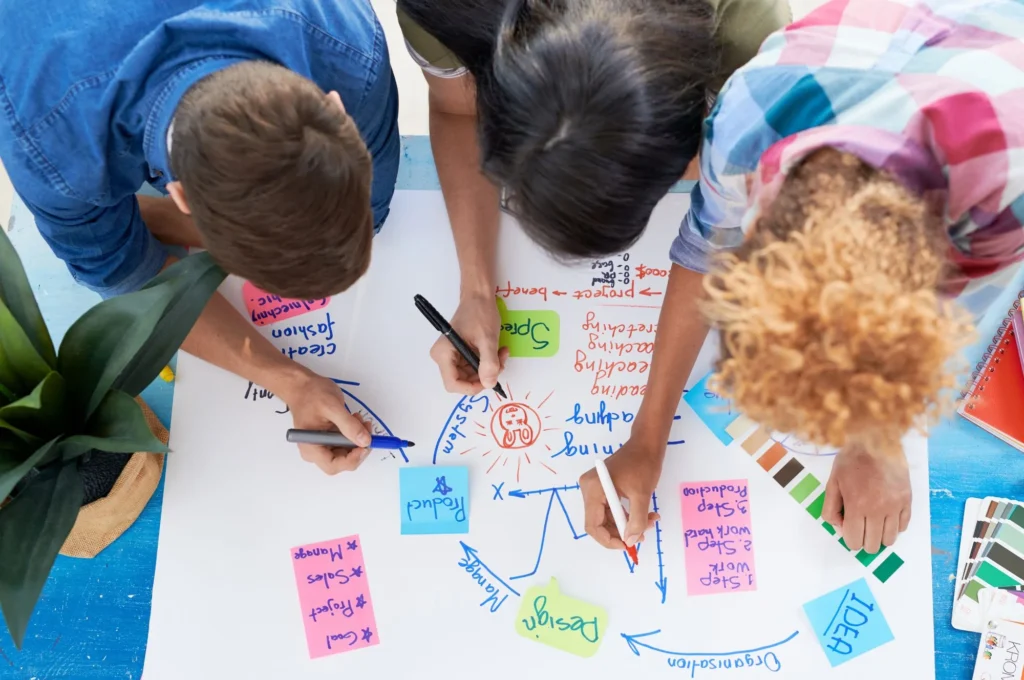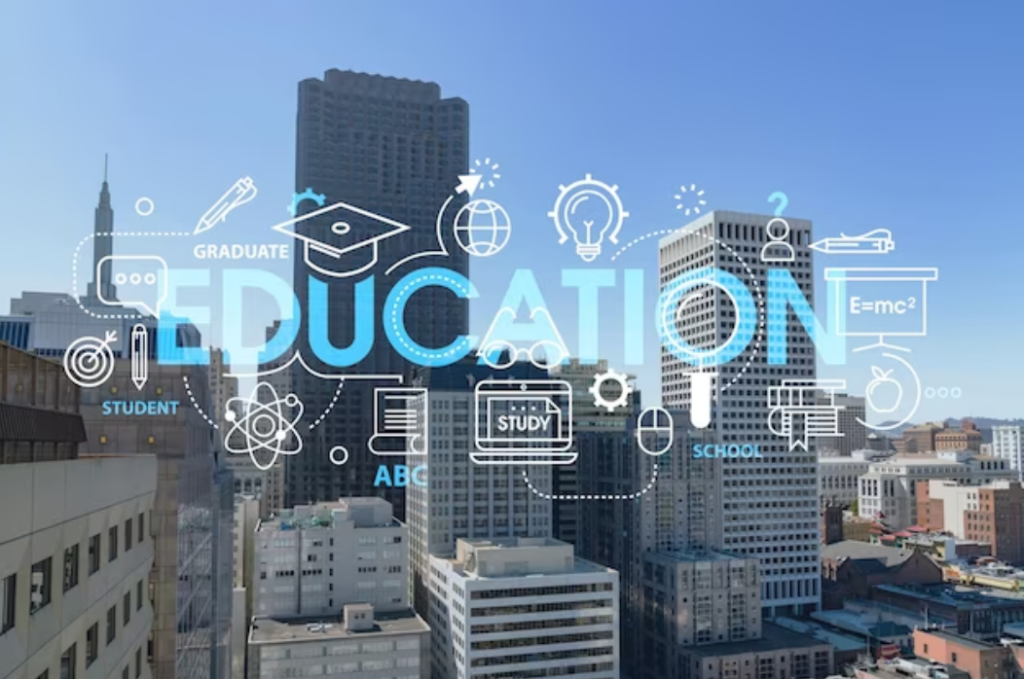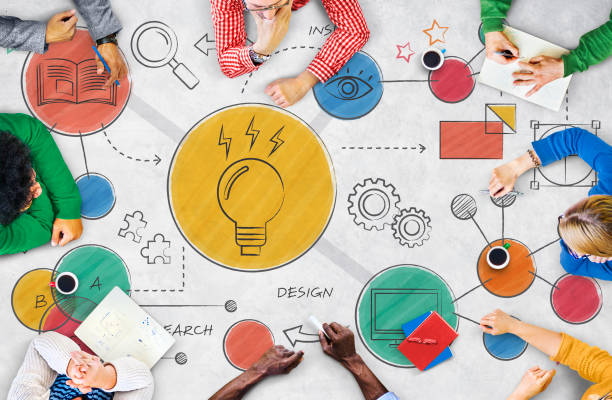Technological advancements and globalization have redefined the way we live, learn, and work, the conventional methods of education are increasingly being questioned. The traditional, lecture-based system that focuses on rote memorization is proving insufficient in preparing students for the dynamic and ever-evolving challenges of the 21st century. Enter Project-Based Learning (PBL) — an innovative educational approach that emphasizes hands-on, experiential learning, problem-solving, and real-world relevance.
This article delves deep into why Project-Based Learning is not just a trend, but the future of education. We’ll explore its origins, its transformative impact on student outcomes, and how it aligns with the skills and competencies required in the modern world. As companies like Deloitte, PwC, and other industry leaders embrace the concept of continuous learning and adaptability, it’s crucial for educational institutions to adopt methodologies that produce graduates who can thrive in this environment.
The Shift from Traditional to Project-Based Learning
A Brief History of Educational Models
For centuries, education has been rooted in the traditional model where teachers serve as the sole source of knowledge, and students passively absorb information. This model, often characterized by memorization and standardized testing, was designed for an industrial era where the workforce needed specific skills to perform routine tasks. However, in today’s knowledge-driven economy, this approach falls short.
The Information Age requires skills like critical thinking, collaboration, creativity, and adaptability — skills that are best cultivated through active, experiential learning. Project-Based Learning represents a paradigm shift from passive absorption of information to active problem-solving and inquiry. This educational model empowers students to engage deeply with content, ask meaningful questions, and develop a lifelong love for learning.
Defining Project-Based Learning
Project-Based Learning (PBL) is an instructional method where students learn by actively engaging in real-world and meaningful projects. Instead of passively listening to lectures, students work on projects that require them to investigate complex problems, develop solutions, and present their findings. Projects are not isolated assignments but are central to the curriculum, integrating various subjects and skills.
In PBL, students:
- Collaborate in teams to solve real-world challenges.
- Apply interdisciplinary knowledge (STEM, humanities, social sciences) to complete projects.
- Develop key 21st-century skills like communication, leadership, and digital literacy.
- Reflect on their learning process, thus cultivating metacognition.
The Compelling Benefits of Project-Based Learning
1. Fostering Critical Thinking and Problem-Solving
In a world where answers are a Google search away, it’s not about what students know but how they use what they know. PBL encourages students to think critically, analyze data, and make evidence-based decisions. By working on complex projects, students learn how to frame questions, conduct research, and iterate on their solutions — mirroring the processes used by professionals in fields like consulting, technology, and business strategy.
2. Enhancing Engagement and Motivation
Unlike traditional methods that often leave students disengaged, PBL taps into their natural curiosity. It creates a learning environment where students feel ownership of their education, leading to higher motivation and engagement. Studies have shown that students in PBL environments display increased attendance, higher graduation rates, and a stronger commitment to lifelong learning.
3. Developing Collaboration and Communication Skills
The ability to work in teams and communicate effectively is a critical skill in today’s workforce. PBL inherently involves collaboration, as students must work together to solve complex problems. This not only improves interpersonal skills but also prepares them for a workplace where teamwork is essential.
4. Real-World Relevance and Application
By working on projects that mimic real-world scenarios, students see the direct relevance of their studies to the outside world. For instance, a project on sustainable energy solutions not only covers physics and engineering principles but also exposes students to global challenges like climate change. This makes learning more meaningful and aligns education with the United Nations’ Sustainable Development Goals (SDGs).
5. Building Adaptability and Resilience
In the face of rapid technological change and economic uncertainty, adaptability is a prized skill. PBL teaches students to embrace ambiguity, take risks, and learn from failure — essential traits in both entrepreneurship and corporate environments.
How Project-Based Learning Aligns with the Future of Work
The Growing Demand for Soft Skills
In reports from Deloitte, PwC, and McKinsey, employers consistently rank skills like critical thinking, problem-solving, and adaptability above technical knowledge. As AI and automation take over routine tasks, the demand for these soft skills will only increase. Project-Based Learning is uniquely positioned to nurture these competencies by creating environments where students are encouraged to innovate, collaborate, and think critically.
Preparing for Industry 4.0
The Fourth Industrial Revolution, characterized by the fusion of technologies like AI, robotics, and the Internet of Things (IoT), is transforming industries across the globe. Traditional education systems are struggling to keep up with these changes, but PBL offers a way to close the skills gap. By emphasizing hands-on learning and industry collaboration, schools can better prepare students for careers in technology, healthcare, finance, and beyond.
Case Studies: PBL in Action
- High Tech High (San Diego, USA): A school renowned for its commitment to PBL, where students engage in projects like building prosthetic limbs for veterans.
- Aalborg University (Denmark): Known for its “Problem-Based Project Learning” model, which has become a global benchmark in higher education.
- Minerva Schools at KGI (USA): Uses project-driven learning to prepare students for leadership roles in global organizations.
How to Implement Project-Based Learning Successfully
1. Curriculum Redesign
Implementing PBL requires a shift from traditional curriculum structures. Schools need to integrate interdisciplinary projects that align with learning objectives. This might involve partnering with businesses, NGOs, or government agencies to design projects that address real-world challenges.
2. Teacher Training and Professional Development
For PBL to succeed, teachers need to transition from being knowledge providers to facilitators of learning. Continuous professional development, mentorship, and access to resources are essential.
3. Leveraging Technology
With advancements in EdTech, schools can use tools like virtual labs, AI-driven assessments, and collaborative platforms to enhance the PBL experience. Tools like Trello, Slack, and Zoom can facilitate teamwork, even in remote or hybrid settings.
4. Assessment and Evaluation
Traditional assessment methods like standardized tests don’t capture the depth of learning in PBL. Schools need to adopt portfolio-based assessments, presentations, and peer reviews to measure student progress.
Challenges and Solutions
While PBL is promising, it is not without challenges:
- Teacher Resistance: Some educators may be reluctant to change. Solution: Provide incentives, training, and resources.
- Assessment Complexity: Measuring learning outcomes in PBL can be challenging. Solution: Develop rubrics that focus on both process and product.
- Equity and Access: PBL may require resources not available in all schools. Solution: Leverage partnerships and technology to democratize access.
The Future is Project-Based
The world is changing, and education must change with it. Project-Based Learning is more than just a methodology; it’s a movement towards a more engaging, relevant, and impactful approach to learning. By embracing PBL, we are not only preparing students to thrive in their future careers but also empowering them to become problem-solvers, innovators, and leaders in a world that desperately needs them.
As industry leaders like Deloitte, PwC, and others invest in continuous learning and innovation, educational institutions must align with these shifts to stay relevant. The future of education is not about filling students’ minds with facts but equipping them with the tools to navigate an uncertain and rapidly changing world.
Project-Based Learning is the future. Let’s embrace it, innovate with it, and transform education for the better.



